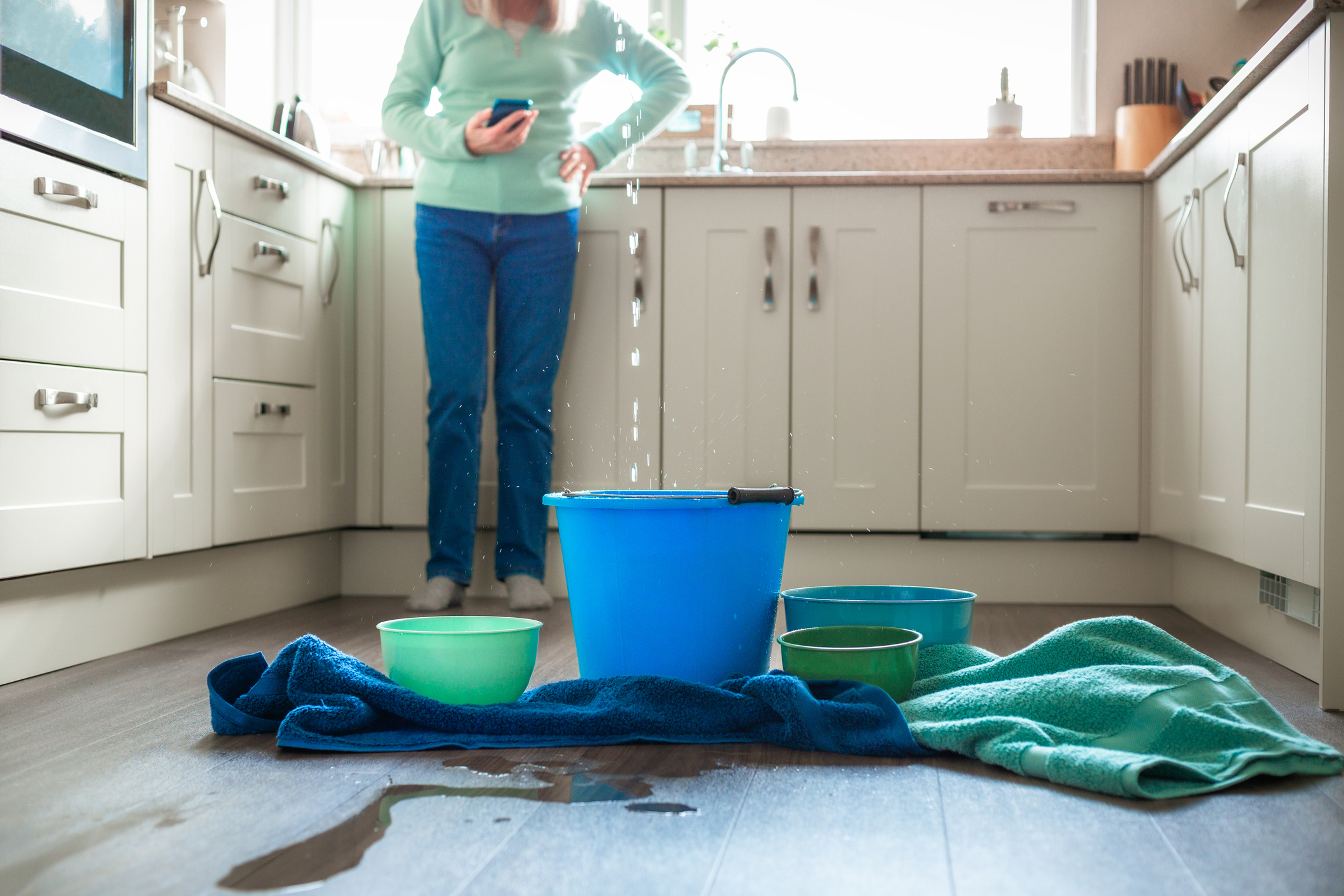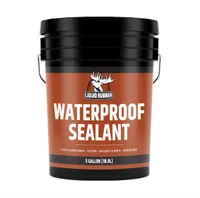How Much Does Flood Insurance Cost in 2025?
Flood insurance costs are rising, but there are several ways to save. Learn what factors affect your flood insurance premiums and how to reduce your costs.

Rachael Green
With two hurricanes looming over the Atlantic, it's time for homeowners along the coast to get prepared. Granted, most models predict Humberto and Imelda won't make landfall in the United States. But the National Hurricane Center has still issued advisories, warning residents of dangerous rip currents and flash flooding.
At the first hint of a flood risk, you should pull out your insurance paperwork and find out what is and isn't covered by your existing insurance. While flood-related water damage might seem like something your home insurance should cover, it's almost always excluded. And that's not something you want to wait until your home is flooded to find out.
If you haven't already, it's not too late to buy flood insurance. Here's how much it costs, what it covers and why you probably need it even if you don't think you do.
From just $107.88 $24.99 for Kiplinger Personal Finance
Become a smarter, better informed investor. Subscribe from just $107.88 $24.99, plus get up to 4 Special Issues

Sign up for Kiplinger’s Free Newsletters
Profit and prosper with the best of expert advice on investing, taxes, retirement, personal finance and more - straight to your e-mail.
Profit and prosper with the best of expert advice - straight to your e-mail.
How much is flood insurance in 2025?
The Federal Emergency Management Agency (FEMA) reports that an average National Flood Insurance Program (NFIP) policy costs about $786 per year, based on 2023 data.
That equates to about $65.50 per month. Private insurance providers also offer flood insurance, and rates for those policies can vary.
Several factors will affect your flood insurance cost. One of the biggest is whether your home is in a designated flood zone and its elevation level. Homes in flood-prone areas or at lower elevations typically face higher premiums due to the increased risk.
Insurers also consider the value of your home and how much it would cost to replace it. If you’ve previously filed home insurance claims, an insurance company may see you as a higher risk to insure and may charge you higher premiums.
While paying for flood insurance is another expense in addition to your standard homeowners insurance costs, flood insurance may help cover expensive repair or replacement costs after a flood. According to the National Flood Insurance Program (NFIP), 99% of United States counties have been impacted by flooding since 1996, and NFIP policyholder claims average $68,000.
Explore some of today's best insurance offers with the tool below, powered by Bankrate:
Does home insurance cover flood damage?
No, standard home insurance policies do not cover flooding. To make things more annoying, water damage that you might not consider flood-related could still be classified as flooding by your insurance company.
Because of these tricky classifications, it's usually a good idea to add home insurance even if you don't live in a flood-prone zone.
Does renters' insurance cover flood damage?
Like home insurance, renters' insurance does not usually cover damage to your belongings caused by flooding. Fortunately, a flood insurance policy for renters is usually cheaper since it only has to cover your belongings, not the property itself.
Get customized quotes on renters' insurance from multiple insurers. Compare that with how much you're currently paying for home insurance to see how much you'd be saving on premiums by renting instead of owning, powered by Bankrate. Advertising disclosure.
What does FEMA’s Risk Rating 2.0 mean for homeowners who need flood insurance?
FEMA implemented Risk Rating 2.0, a new method for calculating NFIP policy pricing. Risk Rating 2.0 went into full effect on April 1, 2022, and changed the way that policies are calculated.
Under the former calculation method, flood insurance premium calculations were heavily based on factors like a home’s flood zone and elevation.
Under Risk Rating 2.0, the factors considered are expanded, including a property’s flooding frequency, common flood types, its proximity to flood sources, and building characteristics, like the height of its first floor. Rather than relying on a flood map, the Risk Rating 2.0 system calculates premiums based on factors specific to individual homes.
According to the NFIP, Risk Rating 2.0 helps ensure that rate increases and decreases more accurately reflect the flood risks that individual homeowners see. NFIP reports that 96% of policyholders will see decreases or increases of no more than $20 per month under Risk Rating 2.0.
What does flood insurance cover?

Flood insurance covers your building and its components, including the electrical and plumbing system, built-in appliances, fuel tanks and solar energy equipment and detached garages.
A standard flood insurance policy also provides coverage for your personal belongings. This includes items such as clothing, furniture, electronics and appliances like your washer and dryer.
Most policies include limited coverage for high-value items, such as artwork or collectibles, though coverage caps may apply. Be sure to review your policy details to understand what is included and whether you may need additional coverage for certain valuables.
Flood insurance generally excludes items such as cars, swimming pools and decks. Policies through the National Flood Insurance Program (NFIP) also do not cover temporary housing or additional living expenses if you’re displaced from your home during repairs.
Coverage exclusions vary depending on the policy you purchase, so make sure to thoroughly read and understand your flood insurance policy. If you have any questions about your insurance, contact your insurance company when purchasing the policy to get a clear explanation.
Who needs flood insurance?
If your home is in a high-risk flood area, such as a flood zone, it’s a very good idea to purchase flood insurance. If you have a mortgage by a federally regulated lender, your lender may require you to buy a minimum amount of flood insurance to protect your home.
Flood insurance isn’t necessarily required if you’re in a low or moderate risk area, but it’s still a good idea. According to the National Association of Insurance Commissioners, 25% of floods occur outside of high-risk areas.
Many situations can cause floods, such as a neighbor’s pool draining into your home or heavy spring rains that flood your basement. Buying flood insurance can give you peace of mind knowing that your home is protected just in case.
How to reduce flood risk and lower your flood insurance cost
There are several ways you can reduce the risk of your home flooding:
- Elevate your home: If your home is at high-risk in a flood zone and has previously flooded, you may consider raising it up to prevent future flooding. This is a significant investment, but it could be worth the cost if your home repeatedly floods.
- Seal your foundation: You can apply a waterproof foundation sealer to your home’s foundation to help keep water from penetrating it. Be sure to focus on seams and vents to close up any gaps.
- Install a backflow valve on your sewer: Water damage caused by a sewer backup is considered flood damage and isn’t covered under your traditional homeowners insurance. You can install a backflow valve on your sewer to help prevent any water from entering your home.
- Elevate your heating and cooling systems: Consider elevating your heating and cooling systems, electrical panels and water heaters so they are less likely to be damaged in a flood.
Liquid Rubber Waterproof Sealant is a coating that is brushed on and cures into a waterproof membrane. It can be used in many applications where you need to create a watertight seal.
Your flood insurance provider may give you a discount for implementing some of the above steps to reduce flood risk to your home. Contact them to describe the ways you’re actively working to reduce flood risk.
If you want to save more on your flood insurance, be sure to shop around and get quotes from multiple companies. You might also choose a policy with a higher deductible, which can lower your premiums. Just be sure that you have money for the deductible set aside in case you ever have to file a claim.
Get more insurance tips and other personal finance insights straight to your inbox. Subscribe to our daily newsletter, A Step Ahead.
Related content
Profit and prosper with the best of Kiplinger's advice on investing, taxes, retirement, personal finance and much more. Delivered daily. Enter your email in the box and click Sign Me Up.

Paige Cerulli is a freelance journalist and content writer with more than 15 years of experience. She specializes in personal finance, health, and commerce content. Paige majored in English and music performance at Westfield State University and has received numerous awards for her creative nonfiction. Her work has appeared in The U.S. News & World Report, USA Today, GOBankingRates, Top Ten Reviews, TIME Stamped Shopping and more. In her spare time, Paige enjoys horseback riding, photography and playing the flute. Connect with her on LinkedIn.
- Rachael GreenPersonal finance eCommerce writer

